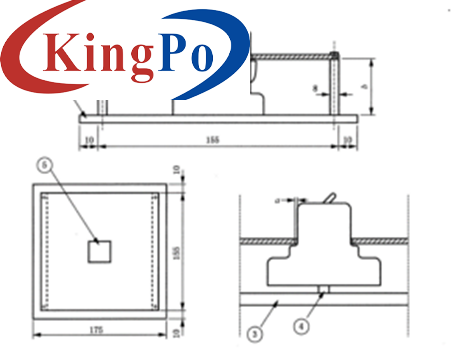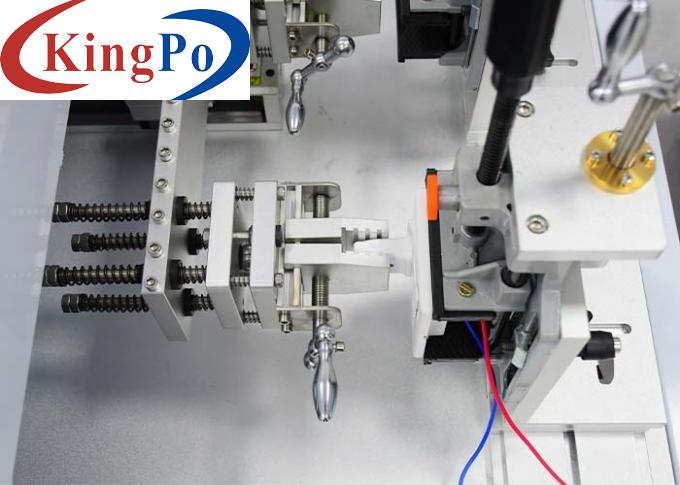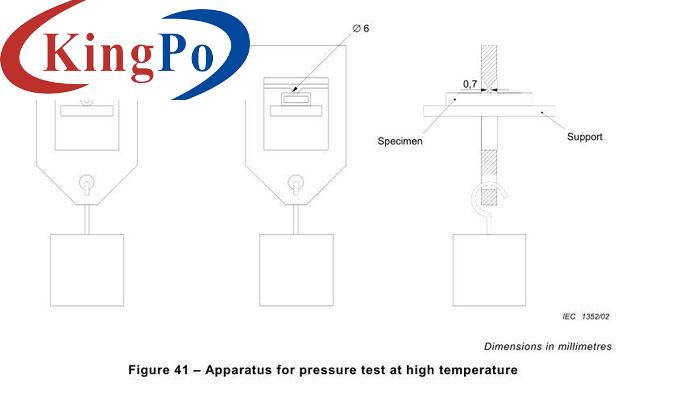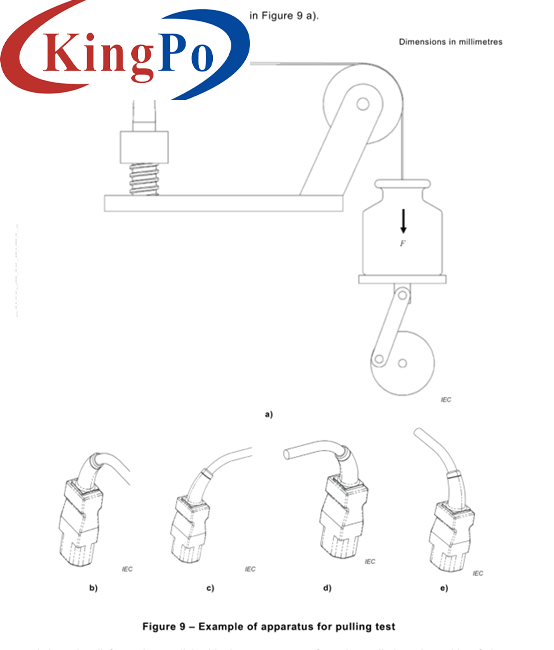Products
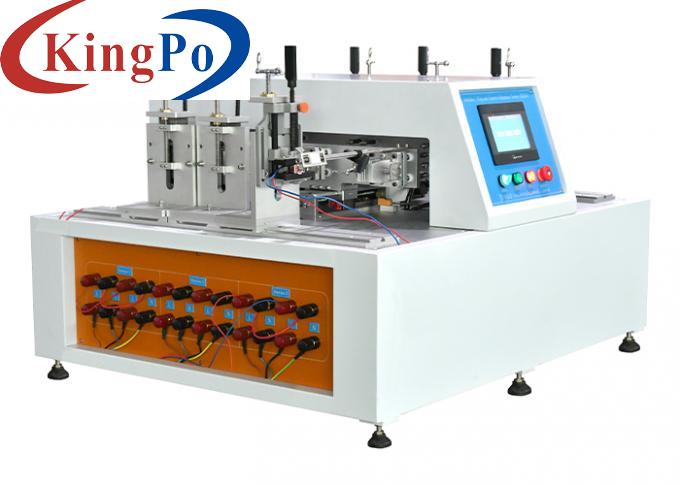
IEC 60884-1 2022 Switches Plug And Sockets Endurance Tester With Multiple Testing Stations
Products Description
IEC 60884-1: 2022 Switches Plug And Sockets Endurance Tester With Multiple Testing Stations
Product overview:
The test equipment has 6 work stations: 3 linear stations synchronously, which can test 3 linear rocker switches and push-button switches, the other 3 rotary stations synchronously, which can test 3 tumbler switches at the same time. The equipment will automatically stop and alarm if one of the stations in abnormal running.
This device complies with standard terms of IEC 60884-1: 2022 clause 20 and 21, figure 22, IEC60669-1:2017 clause 18 & 19, etc.
Working together with load cabinet, can achieve making and breaking ability test and the normal operation endurance test of the plugs, sockets and linear switches for household and similar fixed-electrical installations. The testing purpose is to see whether the switches or the plugs and sockets can endurance the mechanical damage or electric fatigue failure during the normal operation. Whether the contact adhesion occurs or there is a phenomenon of being the on (off) station for a long time, which is the criterion of judging the sample is over damage or not.
The device is made of aluminum alloy rack, stainless steel seal plate, driven by a servo motor and ball screw, 7-inch color touch-screen display and set the test parameters, PLC control. Preset number of trials, testing rate, and stroke.
A switch and plug-socket endurance tester is a specialized testing apparatus used to assess the durability and performance of switches and plug sockets. This tester applies repetitive mechanical and electrical stress to simulate real-world usage conditions and evaluate the endurance and reliability of these components. Here are the key features and components typically found in a switch and plug-socket endurance tester:
Testing Stations: The tester typically consists of multiple testing stations, each designed to accommodate and test individual switches or plug sockets. These stations may be adjustable to accommodate different sizes and types of switches and plug sockets.
Mechanical Actuation System: The tester incorporates a mechanical actuation system that applies repetitive mechanical forces to the switch or plug socket. This system typically includes motorized mechanisms, cams, or levers that simulate the manual operation or insertion/removal of plugs.
Electrical Load Control: The tester allows for the application of electrical loads to the switches or plug sockets during the endurance test. This may involve the use of resistive loads, lamps, or other electrical devices to simulate real-world electrical usage scenarios.
Cycle Control and Monitoring: The tester includes a control system that allows for precise control and monitoring of the test cycles. It enables setting the desired number of cycles, controlling the actuation speed and force, and monitoring the test progress and any anomalies.
Electrical Measurements: The tester may incorporate electrical measurement equipment to monitor the electrical characteristics of the switches or plug sockets during the test. This includes measuring parameters such as voltage, current, contact resistance, and insulation resistance.
Safety Features: Safety considerations are implemented in the tester to ensure the safety of operators and prevent any potential hazards during testing. These features may include emergency stop buttons, protective enclosures, and safety interlocks.
Data Acquisition and Analysis: The tester may have data acquisition capabilities to record and analyze the test results. This includes collecting data on the number of cycles completed, electrical measurements, and any signs of degradation or failure.
The switch and plug-socket endurance tester is commonly used by switch and plug socket manufacturers, quality control departments, and regulatory agencies to assess the longevity and reliability of these components. By subjecting the switches and plug sockets to repetitive mechanical and electrical stress, the tester helps identify any potential weaknesses, wear, or degradation that could occur over time. This information is crucial for ensuring the durability and safety of switches and plug sockets in various applications.
Technical Parameters:
Mitsubishi
Linear: 0~100mm/s,can be preset
Rotary: 0~360°/s, can be preset
Every Other Output Function:
This tester has function: Every other output function, which is mainly used in the plug and socket test. After the load current is connected and the current detection function is turned on, when the plug is inserted into the socket for the first time, the program controls the current of the load cabinet to flow through the socket, and then closes the load cabinet after pulling it out. When the plug is inserted into the socket for the second time, no current flows through the socket, there is current for the third time, and there is no current for the fourth time. In this cycle, the purpose of intermittent power-on is achieved.
No.
Item
Parameters
Remark
1
Power
AC 220V±10V, 60Hz
2
Station
6 stations (3 linear stations synchronously for testing plugs, sockets, linear switches; 3 rotary stations synchronously for testing rotary switches)
3
Operation interface
7-inch color LCD touch screen
4
Drive mode
Servo motor + ball screw
5
Control system
PLC control system
6
Test times
0~999999 times, can be preset
7
Conduction time
0~99.9s, can be preset
8
Non-conduction time
0~99.9s,can be preset
9
Test stroke
Linear: 0~100mm, can be preset
Rotary: 1~360°,can be preset
10
Test speed
11
Test angle
0~360°,can be preset
12
Test angle gears
1-15 gears, can be preset
13
Sample fixtures
One universal fixture with different auctors to adapt to different switches
14
Atmospheric pressure
80~106kpa
15
Ambient temperature
5~40°C
16
Relative humidity
(20~90)%RH
17
Use environment
Requires no violent shaking, no vibration, no electromagnetic interference, no dust, no explosive, no corrosive gases, needs good heat dissipation place
18
Dimensions and weight
L*W*H=960*730*600mm,160kg


